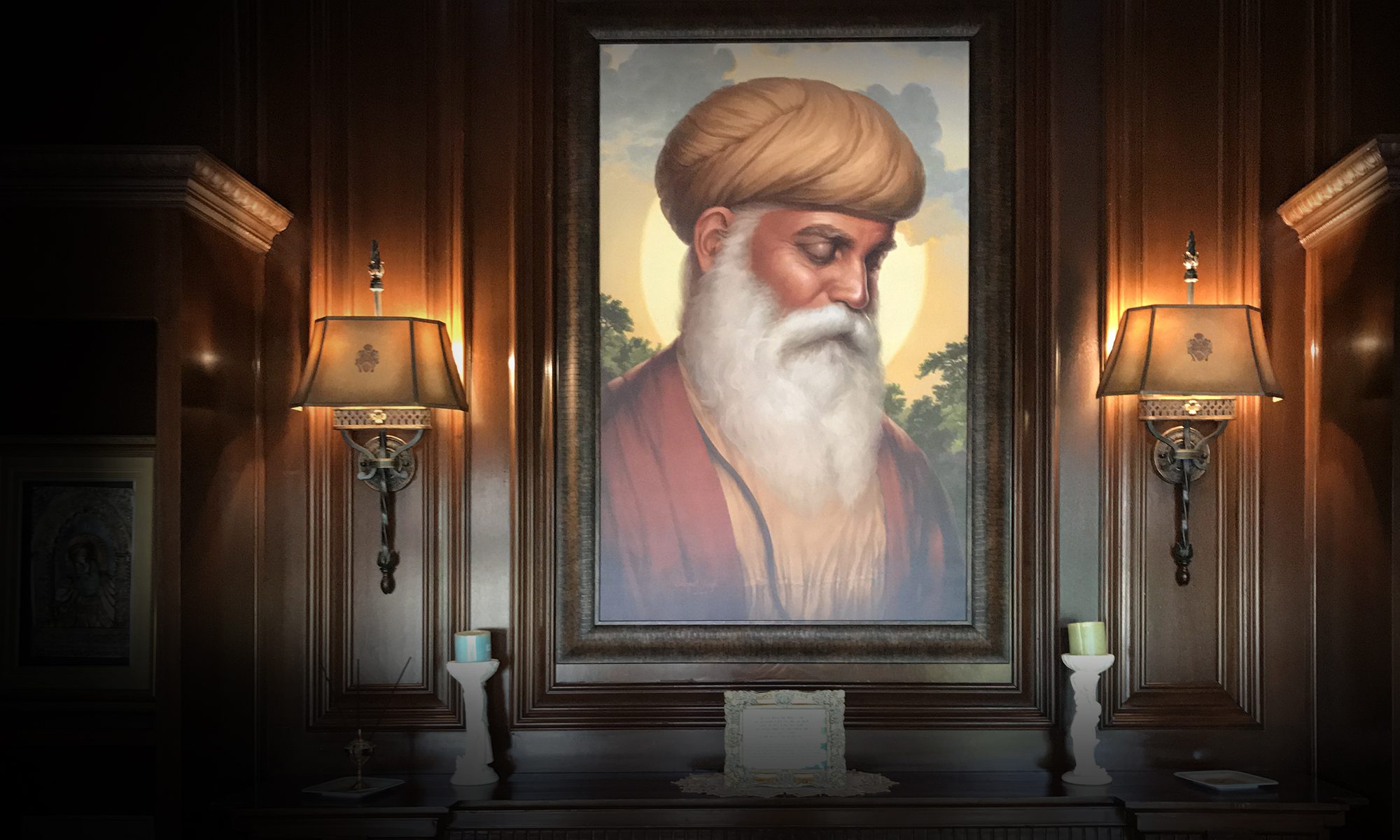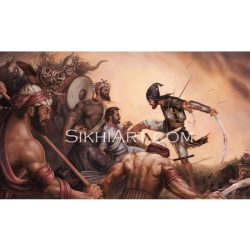Artist's Notes
“If you desire to play the game of love with me, then step onto my path with your head on your palm.”
– Guru Nanak Dev Ji (Guru Granth Sahib, 1412)
On the day of Vaisakhi, 1699, Guru Gobind Singh ji did the initiation ceremony a little differently. He called for his devoted sikhs to give up their heads while holding his glistening sword ready to behead them.
Bhagat’s newest painting captures this critical moment in not just Sikh History but the History of Punjab, that changed the very face of the region and the people who lived there.
After the persecution and execution of Guru Arjun Dev ji and Guru Tegh Bahadur ji, Guru Sahib’s great grandfather and father, Guru Sahib wanted to inspire the warrior spirit in his sikhs so that they would be able to stand up to the oppressors and be able to defend themselves.
So during the Vaisakhi of 1699, Guru Gobind Singh ji addressed the sangat that had gathered to listen to him. He said that great actions require great sacrifice, and with that he pulled out his sword and asked for one head.
The congregation of sikhs were shocked. Some wondered whether the Guru was kidding. Some wondered whether the Guru had gone mad. Guru Sahib’s request sent waves of fear and doubt throughout the sangat.
However one brave man got up and offered his head to Guru Sahib. He bowed down and performed the namahskar to Guru Sahib with folded hands.
Guru Sahib took him inside the tent behind him. After a while, he came back out with his sword dripping with blood, and asked for another head.
Again, another man got up and offered himself as sacrifice.
This happened a total of five times.
These five men who offered themselves up for sacrifice were known as the Panj Pyarey. Bhai Daya Singh ji, Bhai Dharm Singh ji, Bhai Himmat Singh ji, Bhai Mohkam Singh ji and Bhai Sahib Singh ji.
Guru Sahib prepared them for the initiation ceremony. He asked for a cauldron full of water and a khanda sword and thereafter began to stir the water while reciting divine hymns over it. He added sugar to sweeten the water and offered this to the Panj Pyarey. Guru Sahib also requested that he be given the same.
Thus the Khalsa, the pure, were born, ready to defend the sikh nation, ready to fight for the oppressed!
They chanted –
Waheguru ji ka khalsa,
Waheguru ji ki fateh!
That both the Khalsa and the Victory belong to the Wonderful Guru!














jattsandhu (verified owner) –
A never to be forgotten moment in sikh history!!
The tenth king with his disciples in a huge test of faith and loyalty.
Again your work has spoken a thousand words and emotions.
I feel great pride and emotion when I see my children subconsciously staring into this scene in complete silence, I wish I could see what they were imagining in their heads!
Since this canvas was hung up I have had to answer many questions from them regarding the back ground of this painting and what it means which gives me great satisfaction knowing that they have a thirst for our history and culture at a young age.
For me personally, I cannot praise your work enough as all I wanted is to pass down some our rich history to the next generation and your art is a huge tool to inspire and wake up the younger generations by instilling pride in their sikh roots.
SAT SRI AKAL to all and all
‘DEGH TEGH FATEH’